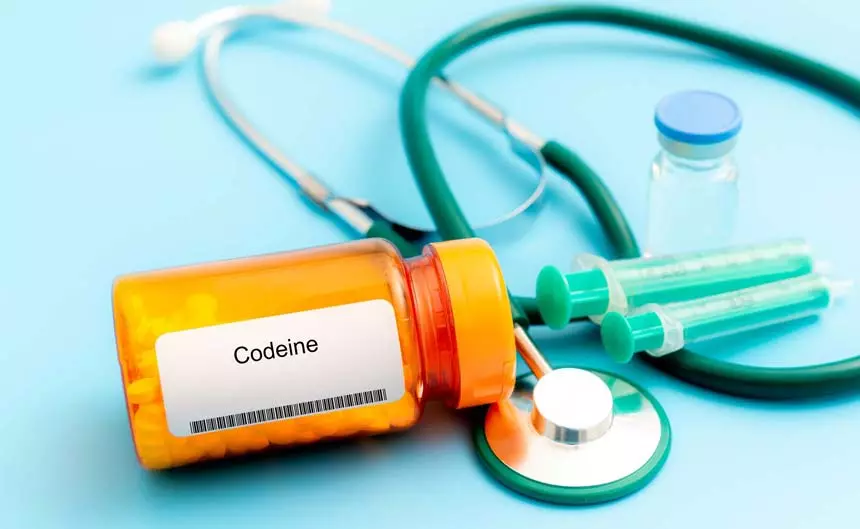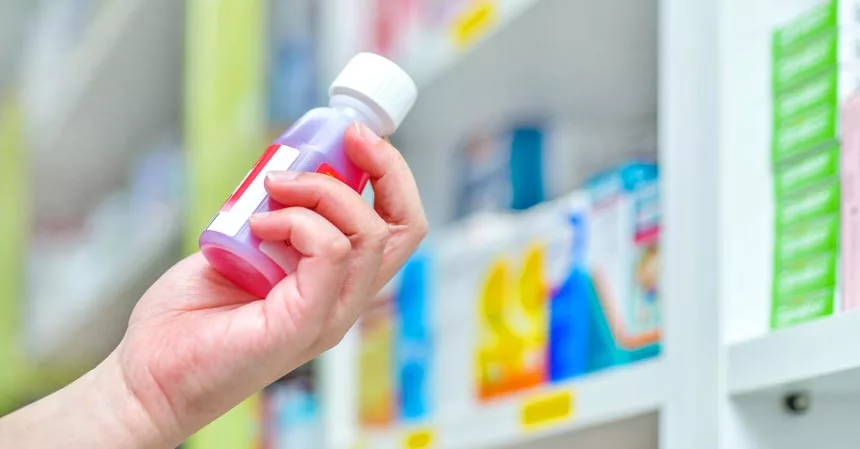What is Codeine?
Table of Contents
- What is Codeine?
- How Does Codeine Affect the Body?
- Understanding Codeine Abuse and Addiction
- What are the Side Effects of Codeine Abuse?
- What are Typical Codeine Withdrawal Symptoms?
- The Codeine Addiction Treatment Process
- What are Codeine Rehab Facilities?
- A Sample Codeine Addiction Recovery Timeline
- Codeine Rehab Centers Near You: Found Here
Codeine is a narcotic opioid that is commonly used to treat pain and cold symptoms. It is also one of the most common ingredients found in various cough medicines and syrups. While codeine is not a prescription opioid, it is classified as a Schedule II controlled substance and can be effectively treated in a codeine rehab setting.
This means that, while it has a recognized medical usage, it also has a risk of abuse and drug addiction. This is the case for many prescription opioids, with opioid addiction currently serving as a leading public health crisis in the United States.
Unfortunately, codeine addiction is a growing contributor to what is being deemed the “opioid epidemic,” as the misuse and abuse of this drug continue to spread throughout the nation. This begs the question: just what makes codeine so dangerous?
How Does Codeine Affect the Body?
Codeine, as an opioid medication, belongs to the drug class known as narcotic analgesics, which are commonly used to treat moderately severe pain. Once inside the body, the drug attaches to opioid receptors in the brain, blocking pain signals and relieving these sensations.
Many cough syrups and other medicines containing codeine can also help to ease various symptoms of a common cold. However, these can also create feelings of euphoria and sedation that can encourage continued codeine misuse and eventually cause physical dependence.
Understanding Codeine Abuse and Addiction

Drug abuse involving codeine and medicines that contain this drug has significantly increased in the U.S. in recent years, currently serving as one of the most commonly abused prescription drugs in the nation.
In many cases, people will develop codeine or other opioid addiction due to the misguided belief that, because they can be used medically, these drugs are somehow less dangerous than other addictive substances.
However, as with any other form of drug and alcohol addiction, the effects of codeine abuse can be significant for a person’s physical and mental health. Many individuals will become stuck in a vicious cycle of misuse and abuse when chasing the euphoric high codeine may produce.
Because extended use of this drug can make it highly addictive, in order to successfully overcome these substance use habits, dependent individuals will greatly benefit from participating in a professional codeine addiction treatment program.
What are the Side Effects of Codeine Abuse?
There are various side effects that may occur both with short-term and long-term abuse of codeine. As a depressant, chronic abuse of this drug will have drastic impacts on the user’s brain and central nervous system.
Furthermore, when taken in excessively high or frequent doses, or mixed with other substances, codeine can also cause respiratory complications and depression, which can be fatal if not properly addressed.
Short-Term Side Effects
There are multiple side effects that may occur from short-term abuse of codeine or using more codeine than is recommended or necessary. While many of these will likely be minor, often going away on their own, there are some that may require professional medical attention.
Some of the most common side effects that may occur from short-term abuse of this medication include:
- Abdominal pain
- Nausea and vomiting
- Constipation
- Slurred speech
- Dizziness and drowsiness
- Heart palpitations
- Restlessness
- Vertigo
- Tremors
- Respiratory depression
- Low blood pressure
- Weakness
- Pancreatitis
- Low libido
- Impaired function/thinking
- Sedation
Long-Term Side Effects
Someone who is addicted to codeine and chronically abuses this drug will likely develop more intense and damaging side effects. At this stage, the person will require professional drug rehab services to overcome their substance use disorder
Some of the side effects of the chronic abuse that come with an addiction to codeine may include:
- Liver damage
- Kidney failure
- Heart damage
- Heart attack
- Abnormal blood pressure
- Seizures
- Anxiety and depression
- Death
If you or a loved one is experiencing any of these symptoms alongside abuse of this drug, this most likely means you have developed a full-blown addiction to codeine. At this point, it is strongly recommended that you seek out professional treatment options, before these habits of abuse have a chance to get any worse.
What are Typical Codeine Withdrawal Symptoms?

When attempting to reduce or completely stop taking codeine, the body may develop a number of side effects as it adjusts to no longer having access to a substance it has formed a physical dependence on.
These are known as withdrawal symptomsand may occur over two phases. While the first stage of withdrawal will typically occur within the first few hours of a person’s last dose, others may develop later on as the body readjusts to being completely codeine-free.
During the early stage, individuals may experience a number of uncomfortable withdrawal symptoms, including:
- Irritability or anxiousness
- Trouble sleeping
- Teary eyes
- Runny nose
- Sweating
- Yawning
- Muscle aches
- Increased heart rate
Later on, in the withdrawal process, individuals may develop additional symptoms, such as:
- Decreased appetite
- Nausea and/or vomiting
- Stomach cramps
- Diarrhea
- Enlarged pupils
- Chills or goosebumps
Because these symptoms of withdrawal can be extremely uncomfortable and difficult to manage on one’s own, it is highly recommended to recover at a professional addiction rehab center, as these can provide the emotional and physical support a person will need to overcome their habits.
The Codeine Addiction Treatment Process

The codeine rehabilitation process requires several steps, most of which can take place all in one recovery center. However, some programs require patients to receive multiple treatments in separate facilities.
No matter what, it is best to choose the addiction treatment center and recovery program that will allow you to feel the safest and most comfortable while overcoming your codeine use and addiction.
While each person’s recovery journey will look different based on their personal recovery needs, this process will generally follow the same three steps, which are:
- Medical Detox
- Rehabilitation
- Aftercare
Step One: Medical Detox
The first step of the codeine rehab process is usually detox. According to the National Institute on Drug Abuse, doctors use COWS, or the clinical opiate withdrawal scale, to determine the severity of the individual’s withdrawal, as well as which treatments will be best for their needs.
This may include the administration of addiction medicine, which can help combat withdrawal symptoms and minimize drug cravings, helping to significantly reduce the individual’s risk of relapse during the detox process of their codeine treatment plan.
Detox alone is not a treatment for addiction, however, and is primarily designed to help treat a person’s dependence on an addictive substance. Codeine detox must be followed by a full rehabilitation program to help clients achieve full and long-term recovery.
Step Two: Rehabilitation
The second step in the treatment process is rehabilitation. This is where the patient will learn how to avoid relapse and also live in recovery. Many different evidence-based practices and treatment options may be utilized in this program, and are the main option for addiction treatment in the United States.
During this part of the codeine treatment process, addiction medicine may continue to be administered while recovering at a drug rehab facility, and therapy may be provided for those with a co-occurring mental illness.
Cognitive-behavioral therapy (CBT) is a popular form of therapy used in addiction treatment, as this helps recovering individuals recognize and change negative thought patterns and behaviors that may be contributing to their substance use habits.
Participating in support groups, as well as receiving individual therapy sessions and group sessions, or participating in counseling services that involve both the addicted individuals and their family members (family therapy) may also be useful during the addiction treatment and rehabilitation process.
Step Three: Aftercare
The final step is aftercare, which is a key factor in relapse prevention during recovery. This can entail a number of different options, including attending support group meetings, living in a sober home or a halfway house, or returning to a recovery center for more infrequent sessions. Each patient will require a different approach to aftercare.
In most cases, this is the general treatment schedule for patients hoping to overcome codeine abuse and addiction. Of course, the different options available in each program, the severity of the patient’s addiction, and a number of other variables can all alter this process somewhat.
What are Codeine Rehab Facilities?

People who need help with codeine addiction are often able to find the best care in professional treatment centers. These facilities may treat a number of different substance use disorders, including different types of opioid addictions.
There are also several different types of rehab centers, each of which will offer a different level of life-changing care depending on the specific treatment center a person chooses to seek support from. These include:
- Inpatient rehab facilities, which offer 24-hour care in hospital-based facilities, are typically sheltered from the stressors and temptations of the outside world to clients who need to be in a controlled space and require around-the-clock surveillance.
- Residential rehab facilities offer 24-hour care and support in more comfortable and non-hospital-based facilities and may feature a more holistic approach to treatment.
- Partial hospitalization programsoffer care during the day but allow clients to return home to their families at night.
- Intensive outpatient programs offer clients the freedom to work, attend school, and carry out other responsibilities during the day but allow them to receive treatment and a place to stay at night.
- Outpatient rehab facilities offer more flexible and affordable treatment, usually during the day; individuals may attend recovery meetings every day at first and then less frequently as they progress in treatment.
Depending on the severity of one’s addiction in addition to other variables, one of these options may be more or less appropriate for his or her needs. It is important to remember that there are many types of codeine addiction rehab programs all over the country and that each patient deserves a program that will allow a safe and strong recovery.
A Sample Codeine Addiction Recovery Timeline
The process of codeine rehab can sometimes take more or less time depending on the variables associated with a person’s situation. Those who need longer treatment programs are usually those who have more intensive symptoms or addictions. However, each individual is different and requires a program that suits the specific situation.
- Detox Timeline: Detox from codeine and other opioids usually lasts a week or two. Some detox centers might keep patients for 30 days at the most for this syndrome.
- Rehab Timeline: Rehab can last anywhere from 28 days to a year or longer. This all depends on how long it will take the individual to recover safely and to be ready to live in recovery without the help of treatment. Some programs last 30 days, 90 days, 6 months, and some may go on longer.
- Aftercare Timeline: Aftercare usually follows rehab and can last for several months or for as long as the rest of the person’s life. This option is all about helping the individual stay sober, so it is best to choose the aftercare program that best helps you in your recovery.
Of course, one treatment program is not always enough to help a person avoid relapse and keep their recovery strong. The NIDA states most people need multiple forms of addiction treatment over their lifetimes in order to avoid relapse.
For example, you might choose to get help from a residential clinic and then transition into an outpatient program afterward. As such, the timeline of your rehab may be different than someone else’s.
All in all, finding and committing to codeine addiction rehab is the best way to recover from this substance abuse disorder. Fortunately, there are many rehab centers available, so take your time and choose the best option for your situation.
Codeine Rehab Centers Near You: Found Here
If you or a loved one is struggling with codeine addiction, know that you are not alone, and help is available to ensure your well-being. At Find Addiction Rehabs, we are dedicated to helping people like you find a codeine addiction treatment program that will serve all of your care needs.
Just by calling our 24/7 hotline now, you can speak with a certified addiction specialist and find treatment locations and recovery resources that will help you achieve sobriety and become a happier, healthier, codeine-free you, today!

